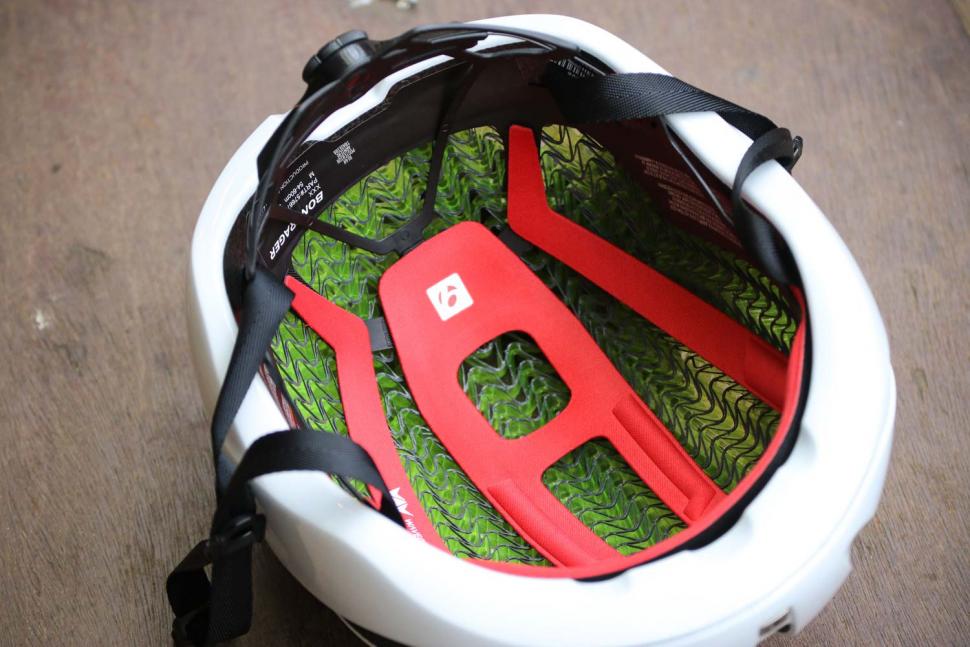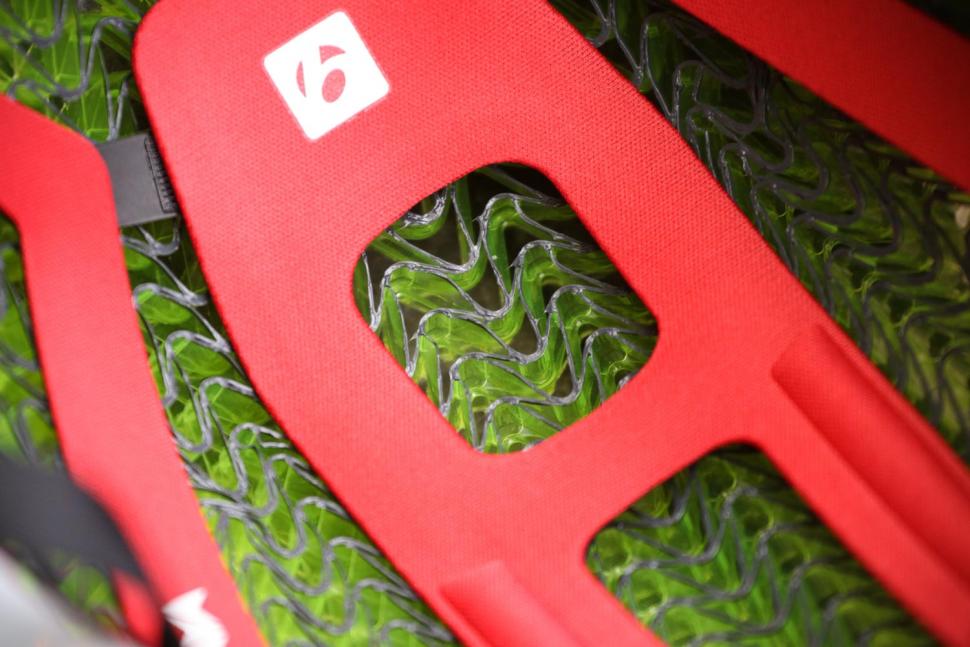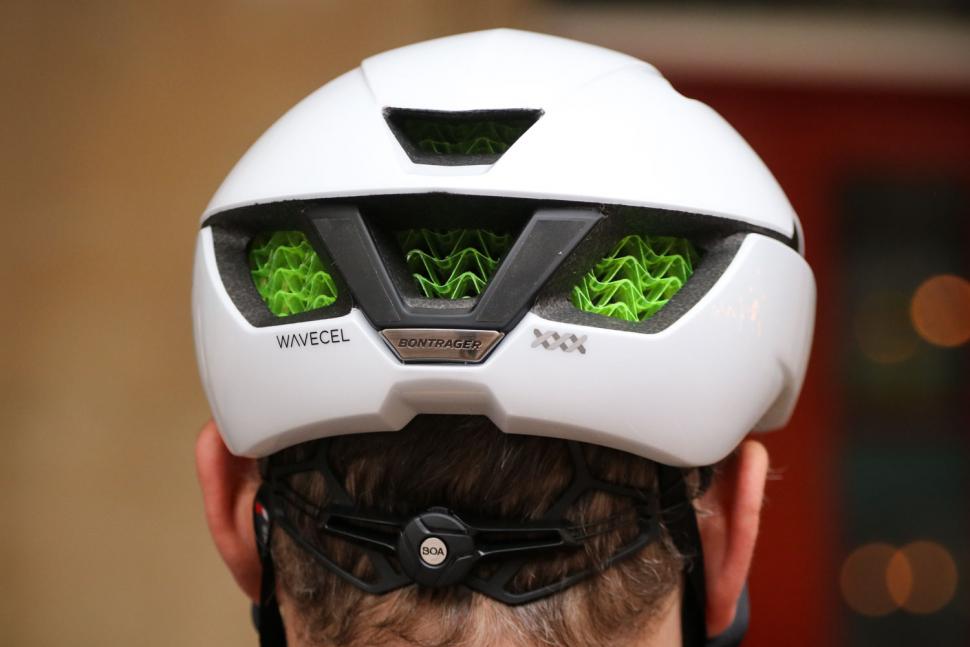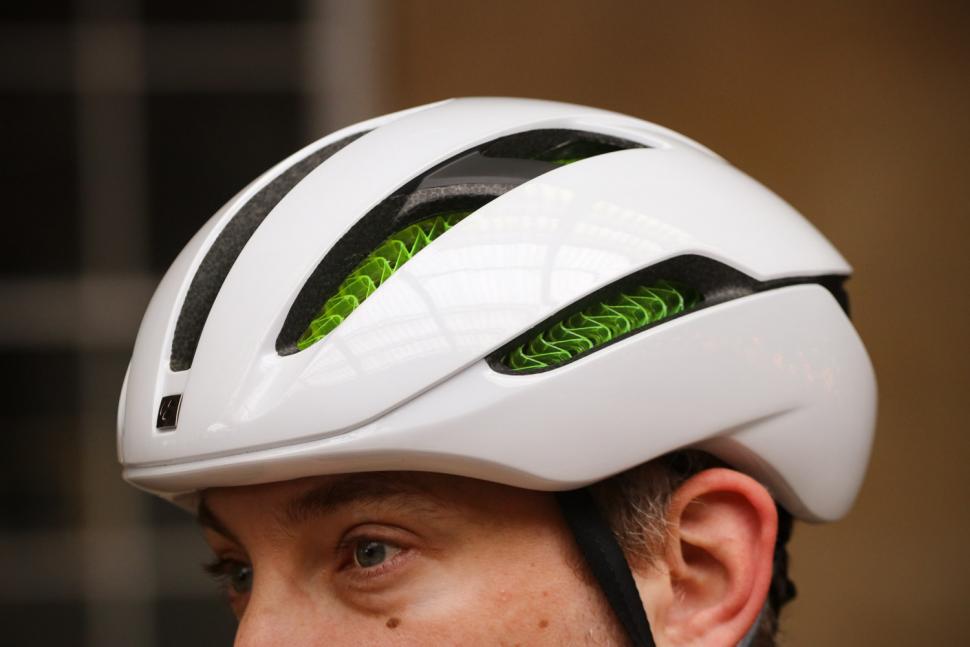- News
- Reviews
- Bikes
- Components
- Bar tape & grips
- Bottom brackets
- Brake & gear cables
- Brake & STI levers
- Brake pads & spares
- Brakes
- Cassettes & freewheels
- Chains
- Chainsets & chainrings
- Derailleurs - front
- Derailleurs - rear
- Forks
- Gear levers & shifters
- Groupsets
- Handlebars & extensions
- Headsets
- Hubs
- Inner tubes
- Pedals
- Quick releases & skewers
- Saddles
- Seatposts
- Stems
- Wheels
- Tyres
- Tubeless valves
- Accessories
- Accessories - misc
- Computer mounts
- Bags
- Bar ends
- Bike bags & cases
- Bottle cages
- Bottles
- Cameras
- Car racks
- Child seats
- Computers
- Glasses
- GPS units
- Helmets
- Lights - front
- Lights - rear
- Lights - sets
- Locks
- Mirrors
- Mudguards
- Racks
- Pumps & CO2 inflators
- Puncture kits
- Reflectives
- Smart watches
- Stands and racks
- Trailers
- Clothing
- Health, fitness and nutrition
- Tools and workshop
- Miscellaneous
- Buyers Guides
- Features
- Forum
- Recommends
- Podcast
TECH NEWS
 MIPS test
MIPS testUpdated: MIPS unable to replicate Bontrager WaveCel helmet safety claims
MIPS says that its preliminary test results do not substantiate the safety claims made by Bontrager about its new WaveCel helmets.
Update: Bontrager now says that “consumers can decide for themselves which products fit their particular needs based on the data and information available to them.”
[If you read this story yesterday, skip to 'Update' down at the bottom of the page for the new stuff.]
Okay, so there's a storm a-brewin' in the helmet world. Essentially, ingredient brand MIPS (which stands for Multi-directional Impact Protection System) has been around for a few years now supplying helmet manufacturers with technology that's designed to lessen the rotational motion associated with brain injuries such as diffuse axonal injury, subdural hematoma, and concussion.
Earlier this week, Trek sub-brand Bontrager revealed its new WaveCel helmets that feature a collapsible cellular material that is designed to do something similar.
"On impact, the layers of the WaveCel material move independently and flex until the cell walls crumple and then glide, actively absorbing direct and rotational energy and redirecting it away from your head," says Bontrager.
Bontrager has made some big claims about WaveCel, saying that it’s “proven to be up to 48 times more effective than standard EPS (expanded polystyrene) foam at preventing concussions from common cycling accidents", and that "nearly 99 times out of 100, WaveCel prevents concussions from common cycling accidents".
So that's the distilled version of where we were up to on Tuesday. We have a full feature that tells you everything about MIPS and you can find out all about Bontrager's new WaveCel helmets here.
Now MIPS says, "Preliminary test results of WaveCel helmets by MIPS cannot substantiate these claims. While further testing is warranted, MIPS cannot see that the helmets perform in a way that the claims Bontrager/WaveCel makes in the comparison between WaveCel and other helmets/technologies.
"MIPS’ position on evaluating the possibility of a concussion resulting from a crash is that it is a highly variable event and unique to the individual impact and rider physiology. No two crashes are the same and no two people are the same, so the risk of concussion is a near-impossible claim to make. However, rotational motion itself can be measured objectively, so that is the metric MIPS can actually report and address."
Once additional testing is completed, MIPS intends to share the data with the public.
MIPS says it is pleased that more helmet brands are seeking to deal with rotational motion in the event of a crash, but is concerned that there is no industry-wide standard from third party testing organisations for measuring this – which is something we reported on earlier in the month.
“We at MIPS have conducted more than 22,000 tests and we know that not all helmets are equally safe, not even the ones that claim to address rotational motion”, says Johan Thiel, CEO of MIPS. “While we hope from a consumer standpoint that Bontrager’s claims are accurate, we are curious to see how it lives up to the tests conducted in our lab.”
“We are a company of scientists, so we’re approaching this in the spirit of collaboration inherent to scientific research. If together we can make cycling safer for riders, then we will have honoured our mission to make the safest helmets possible.”
Update
Trek/Bontrager has now responded with this statement: “We believe that slip liners [a MIPS system is a slip liner - Ed] are a good technology that provide a real benefit to riders. Having partnered with MIPS for a number of years, we have brought many products featuring MIPS technology to market. We also believe that there is room for innovation in rider safety. Trek offers helmets with WaveCel, MIPS and standard technology. Consumers can decide for themselves which products fit their particular needs based on the data and information available to them.”
Okay, so that could be seen as quite a conciliatory approach were it not for the fact that MIPS hasn't yet published its data, until further testing is complete.
The situation now is that you have Trek/Bontrager/WaveCel data saying that its own technology provides certain safety benefits, and MIPS, which produces rival systems, saying that its preliminary test results do not substantiate those safety claims, and promising to publish its data in due course.
The only testing from neither of these parties has come from Virginia Tech.
If you'd like to check out the full paper relating to WaveCel, Evaluation of a novel bicycle helmet concept in oblique impact testing, written by researchers including two of its co-inventors, you can read it here.
You can check out the Virginia Tech methodology and gradings here.
Mat has been in cycling media since 1996, on titles including BikeRadar, Total Bike, Total Mountain Bike, What Mountain Bike and Mountain Biking UK, and he has been editor of 220 Triathlon and Cycling Plus. Mat has been road.cc technical editor for over a decade, testing bikes, fettling the latest kit, and trying out the most up-to-the-minute clothing. He has won his category in Ironman UK 70.3 and finished on the podium in both marathons he has run. Mat is a Cambridge graduate who did a post-grad in magazine journalism, and he is a winner of the Cycling Media Award for Specialist Online Writer. Now over 50, he's riding road and gravel bikes most days for fun and fitness rather than training for competitions.
Latest Comments
- BikingBud 3 sec ago
And here is maybe my downfall as an engineer and being involved in safety I am too objective....
- Tom_77 21 min 52 sec ago
Bike serial numbers should be registered at the point of sale - Bike Register / Immobilise *. It would be easy to do and ought to make it harder to...
- Tom_77 45 min 13 sec ago
Tempted to get him a sweary birthday cake like in The Thick Of It....
- Bigtwin 56 min 16 sec ago
Which makes the case perfectly for a sensible limit on the price of the C2W bike, and the relief on it. No one on north of £100K a year needs to...
- dubwise 59 min 33 sec ago
Sorry to let you down Jack, but unfortunately I have a face for radio and a voice that is only useful for closing time in pubs. For shame.
- Bigtwin 1 hour 13 min ago
Didn't happen did it? They came into my shop a couple of years back and said it was "on the way", but never heard anything more.
- Steve K 1 hour 46 min ago
Very parochially, I've still not forgiven Pearson's for abandoning their roots by leaving Sutton.
- Gd29 1 hour 54 min ago
Warner Bros makes 8 year term agreement... withdraws after 4 taking the whole thing down....
- Pub bike 2 hours 29 min ago
That may well be so but in this specific case following the link to the article the first paragraph states "A "devastated" owner of a bike shop in...
- BikingBud 2 hours 30 min ago
Kind of like the idea but feel it is getting a bit too much into "Enemy of the State"...




Add new comment
24 comments
Well' not forgetting that cycling is safer for you than not cycling and making people wear helmets causes not cycling, it is lies to think helmets are safety equipment in the first place.
In fact if these funny hats for the paranoid and neurotic are in any way portrayed by their manufacturers as safety equipment, then they are breaking the trade descriptions act with their lies.
Claims from PPE manufacturers preying on peoples safety insecurities not adding up?
Fun that they’re popping shots at each other for a change instead.
In Canada, the general public (majority) buys their helmets from places like Walmart and Canadian Tire at about $15 to $40 CAD. Anyone who does a bit more riding (minority) like mountain bikers, roadies and commuters will buy helmets from the LBS at about $50 to $200 CAD. The trick is to ensure that new technologies eventually reach the majority of the people. That means a price point affordable by the masses. . .and that's when you truly have a breakthrough. Yes, companies need to recoup R&D and make a profit. But to truly be for the greater good rather than bicker over the better technology for temporary supremacy, the long run sustainability, effectiveness and contribution of any company should be measured in terms of whether they are affecting change at ALL levels of society.
. . .just my 2 cents worth, cheers!
In Canada, despite huge increases in helmet wearing and helmet laws AND a reduction of approx 20% in cyclists - 1993/94 compared to 2013/14 as a share of regular cyclists (those who have cycled in the last 3 months), cycling deaths have not gone down. the 1994 figure was 85, following years were 74, 58, 67 & 71. The 2013/14 figure was 89! Cyclist deaths per million population is higher than in the mid to late 90s
Yet since the laws/rise in helmet wearing generally we have better medical science, better protection to vulnerable road users built into motors, yet more tech in motors for better braking and importantly much more segregated cycle infrastructure in Candaian cities. Why is Canada and EVERY other nation that has helmet wearing rates increase significantly* and/or has implicit laws not showing any positive impact from helmet use?
* In Canada children 12-14 increased from 18% to 50% and all ages 19% to 45% 1994 to 2013/14 that ALWAYS wore a helmet.
oh yeah 1990 to 2000 Pedestrian fatalities went down 31%!
Yet more evidence of risk compensation, the authorities focusing on the vulnerable (see extract from RCMP 'advice' AKA victim blaming for peds!!) to protect themselves and not focus on the killers AND importantly the ineffectiness of cycle helmets!
You might as well put a hankerchief on your head, it'll make you safer than wearing a helmet!
Canadian Mouted Police victim blaming.JPG
A competing organisation claims the competition is no good. We need some independent testing here.
A competing organisation claims the competition is no good. We need some independent testing here.
A competing organisation claims the competition is no good. We need some independent testing here.
This is quite a coincidence.
Just yesterday destroyed my first helmet in a crash, and saved my head. Need new helmet.
Should I go for tried and tested MIPS or be an early adopter of WaveCel?
Tried and tested sounds like common sense.
P.S. WaveCel claims set off my BS detector...
Is there an explanation somewhere for morons like me of what the tests actually mean to riders in the real world (i.e who are not detaching their heads and dropping them on an anvil at a certain precise angle).
This could help people make an informed view of when a helmet is likely or not to help, and hopefully put a stop to the nonsensical comments along the lines of "the coroner noted that the rider was not wearing a helmet when they were hit by a car that was travelling at 50 mph"
If the claims aren't solely generated by some company PR department and actually based on published work, then there's usually a description in the papers of the test methodology and how that's potentially linked to real-world situations or consequences. Sometimes the papers are behind pay-walls etc so that not always very useful.
Obviously, short of actually putting helmets on people and smashing them into walls (which does happen, just not typically when they're alive), onto floors etc, some form of abstraction has to take place. There are a number of industry 'standard' test types, and many more that researchers and helmet manufacturers use themselves. Some places, such as the Virginia Tech helmet lab, have more information publically available about the testing and the models used, results interpreted and so on, e.g. in the VT test methodology they describe how they measure linear / rotational acceleration and velocity, and links to papers that relate those numbers to things like concussion risk - some of those are model based, some from reconstructions using cadavers, some from sport injury assessments and so on. For example, there are data sets from the NFL which have head-injury / concussion statistics from hundreds of players using instrumented helmets that measure rotational acceleration and velocities - that can be used to try and infer what levels of impacts tend to lead to what particular type of injury (or lack of).
They also test impact angles, differing impact surface types (rough, smooth, sharp, flat, round etc), whether the test structure is driven, dropped or whatever, different speeds and so on. These are compared against other tables, models etc which aim to relate things like impact angle and velocity to incidence of head injuries in the real world.
The choice of test parameters should be made so that they are similar to those experienced in real incidents, and which can be compared to real world data - but obviously having a number of discrete, standard set-ups will help with testing consistency and correlation to actual data; they're just providing data points on a more or less continuously varying spectrum of results - part of the issue is to make sure that those data points cover a relevent portion of those real-world scenaris and with sufficient reproducibility and precision to actually make any conclusions useful. That's not trivial obviously, but the more testing, data and standards around the better...
So bottom line is that tests are designed to try and reproduce impact scenarios that can be matched with real world data. Everything is based on that comparison against actual head injury reports and data, not just some arbitrary model. The calculations used to translate the raw numbers from those tests need to be open, reproducible and robust and the quality of the real world data high - the former is often the thing that is debated the most but people (such as VT) are trying to generate standards and consensus to make that happen. It's not the same as coming off your bike and hitting your head or helmet, but the more data points you can get that correlate to actual data the closer it will get.
My helmet is 4 years old & although it's never hit the deck with me (touch wood) I'm still considering replacing it with a MIPS equipped model just purely for peace of mind.
None of what Trek / Bontrager are claiming would make me think any different, at this point anyway.
Never, ever trust test results sponsored by a company about its own products. Never. It is way to easy to structure a test to favor one's own products. The Bontrager test results should be suspect until replicated by independent testing. Same goes for MIPS or any others. Maybe this stuff does what they claim, but I wouldn't shell out any dough on the assumption that its any better than any other helmet until there is a lot more evidence. The concussion test is clearly pure BS though as there is no acceptable way to test that claim, which kind of makes you wonder about the rest of the claims.
Whilst I agree with the first bit - the testing methodology, apparatus and results are public domain. They are also inline with existing tests and the concussion risk calculation is in compliance with a standard for such things which is intended to correlate to real world data. The helmets have also undergone independent testing, with the rating already publshed. So, while keeping a healthy degree of cynicism is a good thing, it's also worth bearing those things in mind while awaiting test result replication.
It does seem to be rather similar to the Koroyd stuff that'd been around for quite some time now.
Well, it has holes in it. Apart from that, they seem pretty different.
Here's the full paper that relates to WaveCel: Evaluation of a novel bicycle helmet concept in oblique impact testing
As you'd expect, it makes it clear that "some of the authors (Michael Bottlang, Steven Madey) are co-inventors of CELL technology described in this manuscript, have filed patents, and have a financial interest in the company that owns this technology."
Helmet not as good as claimed.
Well, hooda thunkit?
So it appears that the Bontrager helmet is not as safe as a MIPS one in the event of someone sticking black tape over your eyes, cutting off your head and dropping it on the ground using a bit of string
So one company that's sharing the same market space as the other says the other company's products is no good according to there own test. This is sort of the cigarette company's saying there products are healthy in there own test
Hence why independent comparative tests are so important, rather than blindly relying on the 'scientific' claims from industry tests conducted solely by vested parties. I wouldn't take the data any industry funded and conducted study in this area, from any technology producer, at face value.
At least when MIPS test they share data and also it can be independantly verified by Virginia Tech. No data on the Trek helmets yet except there say so
Looking forward to seeing all the data - to be fair to Trek though
https://www.helmet.beam.vt.edu/bicycle-helmet-ratings.html
You guys need to use your noggins with quoting that Virgina Tec website. Lots of really dodgy selective language on there. I wouldn’t touch it with a barge pole.